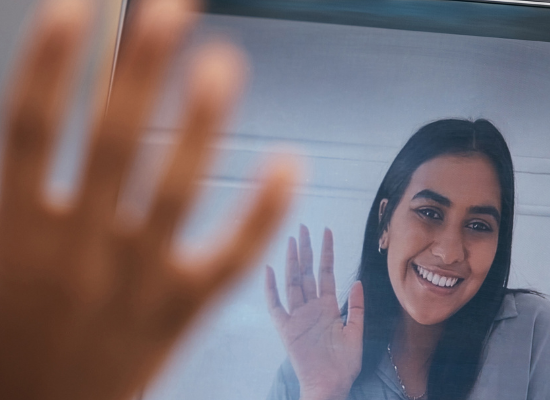
Stephanie Hepburn is a writer in New Orleans. She is the editor in chief of #CrisisTalk. You can reach her at .
Psychiatry was Dr. Sosunmolu Shoyinka’s last medical school rotation. Until then, he thought his likely career path would be public health or internal medicine. Three months before graduation, he began his psychiatry rotation. “I was like, ‘Where have you been all my life,’” he laughs. “A light bulb went on.” Even so, deciding to become a psychiatrist wasn’t an easy choice.
Dr. Shoyinka, chief medical officer of Philadelphia’s Department of Behavioral Health and Intellectual Disability Services, is from Nigeria, where mental health stigma is widespread. “It’s still an issue, but getting better,” he says. “Post-Covid, people see this isn’t just for the small slip of the population who they believe to be mentally weak or have character defects.” He emphasizes that many now see that anyone can have their mental health challenged under the right circumstances.
That was not the case back when he was a young medical student. One of his professors quipped, “Internists know everything but do nothing, surgeons know nothing and do everything, and psychiatrists know nothing and do nothing.” Dr. Shoyinka said the joke summarized not only how the general public felt about mental health but also how professional colleagues thought about psychiatry. “I had to wrestle through that and basically come to the conclusion that, well, I’m going to do this regardless, and it turned out to be the right choice for me.”
When he moved to the United States, Dr. Shoyinka quickly found mental health stigma prevalent here too. “It just looks different,” he says. Freud and psychoanalysis have permeated mainstream culture — an influence seen in everyday jargon with terms like subconscious, Id, ego, and defense mechanisms — but so too has stigma. “Psychiatry is part of the public discourse but is often presented in a way that makes people with mental illness look dangerous. However, we know people with mental illness are more likely to be victims of violence.”
When working at Yale, he also discovered that, similar to his colleagues in Nigeria, general medical teams were reluctant to investigate root causes of behavioral issues, often manifestations of non-psychiatric conditions. “They just wanted them off their unit,” says Dr. Shoyinka, “even when the underlying problem was a general medical problem like an electrolyte imbalance, postoperative delirium or a reaction to medication.”
He highlights one of the most troublesome forms of mental health stigma in the U.S. is the persistent disparity in health care funding. “Historically, mental health services have never been adequately funded or they’ve been for brief periods where there’s been a big push like we’re seeing now with 988,” says Dr. Shoyinka. (988 is the number for the 988 Suicide and Crisis Lifeline, formerly the National Suicide Prevention Lifeline.)
The attention 988 has garnered from legislators and the media is reminiscent of when Congress passed and President Kennedy signed the Community Mental Health Center Act of 1963. “President Kennedy pushed for deinstitutionalization and to bring mental health treatment into communities,” he says.
However, what happens next with funding determines the sustainability of 988. Dr. Shoyinka points out that mental health funding is often the first to be adversely affected in times of distress. “It’s not seen as generating much revenue and that leads us to where we are today — insufficient funding and staff,” he says. When people can’t access services, they’re more likely to encounter law enforcement, end up in jail or experience homelessness.
What he finds particularly frustrating is the myopic view of mental health, as if mental health, physical health and quality of life are not intertwined. “People with mental health challenges often end up unsheltered or unemployed or underemployed, requiring public assistance such as Medicaid,” he says. According to Dr. Shoyinka, cutting public health insurance, which pays for the bulk of mental health, substance use and intellectual and/or developmental disability services, is a manifestation of stigma. “We’re saying that these conditions are not as important and that’s what stigma looks like in real-time.”
What makes him feel hopeful is the certified community behavioral health clinic movement. The model is not new — in 2014, Congress enacted the Excellence in Mental Health Act, a Medicaid demonstration program first piloted in eight states — but it has recently received a large infusion of funds. In March, the U.S. Department of Health and Human Services announced over $120 million in funding opportunities for the clinics to provide mental health and substance use disorder care. There are now over 500 certified community behavioral health clinics throughout the U.S.
“The model is like Kennedy’s community mental health centers on steroids,” says Dr. Shoyinka. “They’re required to provide a full range of services to address the mental and physical health needs of participants.”
In a press release, Dr. Miriam Delphin-Rittmon, assistant secretary for mental health and substance use at HHS and the head of SAMHSA, highlighted the model’s success. “Data show in the first six months of receiving care, CCBHCs decrease homelessness, decrease the amount of time spent in correctional facilities, decrease the time spent in emergency rooms for behavioral health issues, decrease inpatient hospitalization for mental health treatment, and decrease the use of illegal substances,” she said.
When the clinics mature, Dr. Shoyinka believes they’ll be able to deliver comprehensive and culturally-competent care to all populations. What also makes the model distinct from many other Medicaid programs is it isn’t funded through fee-for-service billing but instead a prospective funding mechanism. “The mechanism shifts away from having to justify the care you provide to Medicaid, recognizing that delivering good quality care includes a range of services that don’t fall under billable services,” he says. That includes care coordination, phone calls, connecting people with social services and helping address social determinants of health.
He highlights that while providers might not be able to bill for these services in a traditional fee-for-service model, they’re essential components that must be funded. Medicaid acknowledges this in the prospective funding model and pays certified community behavioral health clinics to provide all necessary services to accomplish specific, measurable outcomes. “The real genius of CCBHCs lies in the move to the prospective funding mechanism, the attributed or assigned population — which means, ‘I’m responsible for everything to do with this group of people’ — and tying funding to measurable outcomes and require that they’re tracked and reported routinely over time,” he says.
“Once they fully mature, CCBHCs have the potential to shift the funding landscape.”
Dr. Shoyinka similarly sees 988 as an opportunity for standardization. “When we figure out the metrics, implementation and how to serve different populations, then we’ve created this big standardized front door for people to come and knock and say, ‘Hey, I need mental health services,’” he says. However, how 988 is sustained — and ensures Congress’ intent for equity is fulfilled — is through the funding. “We need to get both right.” Adequately funding 988 is an opportunity to finally place mental health on the same financial footing as other standardized medical services, such as EMS services.
The prospective funding model could work as a framework for funding all 988-related services and address stigma and the continued funding disparity in health care funding. “It will help us deliver on what 988 has promised,” says Dr. Shoyinka.









